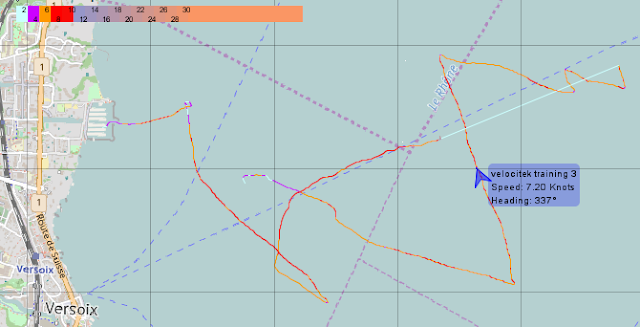 |
| Bringing the boat to Founex and training outside of Founex |
 |
| Training at night, bringing MM back to Versoix |
It is now also time to start about thinking how to get Mic Mac in to shape for a probably long and if there is a lot of wind, demanding race.
I should have a close look at the boat and start improving what I can. If I go through my head there are already following things coming to my mind:
-Someone made a remark on our e-log that a screw is missing on one of the winches (better I check that soon)
-The headsail sheets are too short and I need to prolong them
-someone made e remark about the racing headsail, there should be a small hole( I better have a look soon, just in case it needs professional repair
-the haljard for the small spi is to thin and slips in the cleat in lot of wind
-the compass light is not working
-ne spinnaker sheet is way too big and heavy, I will get a proper one from Bucher and Walt
- I need to remove all additional wheight on friday before the race (for ex. cushions in the bow, old sheets that are stored in the boat)
-lubricate all pullies and blocks
-what about installing an electric autopilot, just in case I find myself somehere close to Lausanne on Sunday, without wind? This could make my way home a lot more comfortable:)
-








